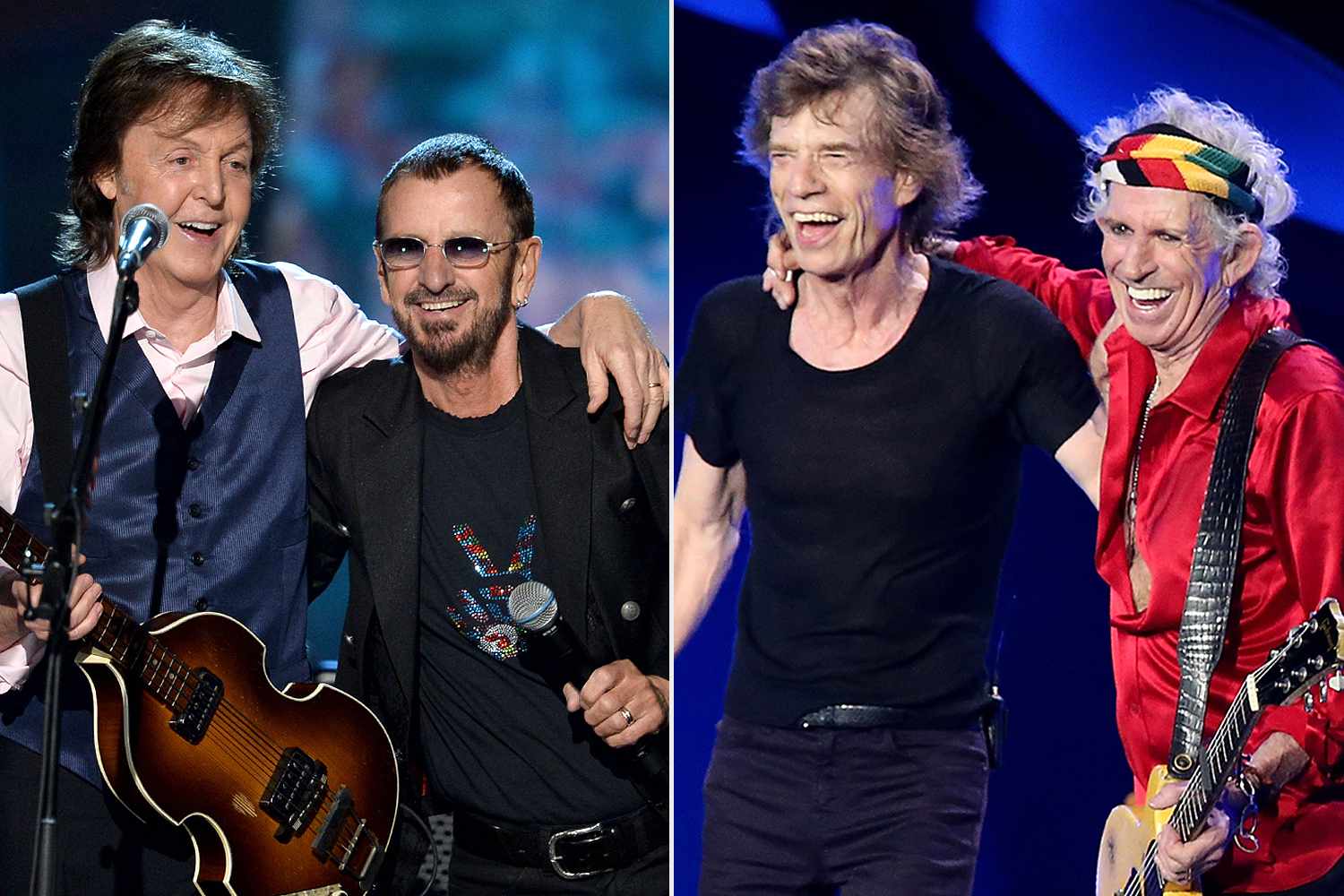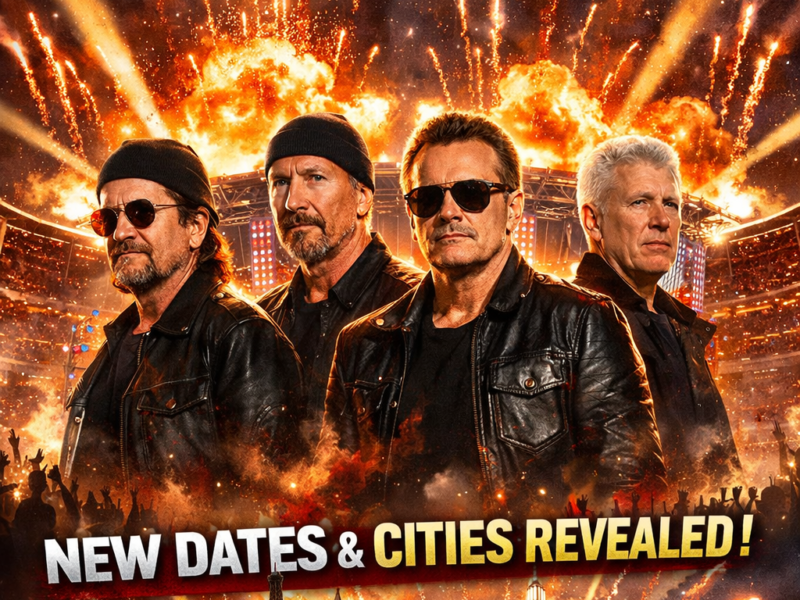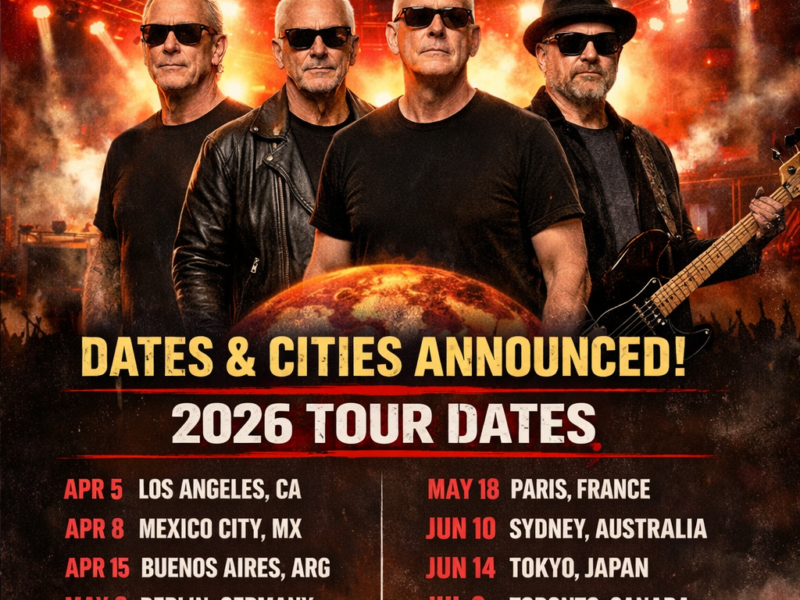In a moment that seemed almost too incredible to believe, the world watched in awe as a historic convergence unfolded on stage—a once-in-a-lifetime event that blurred the lines of rock’s greatest rivalries and united legends across generations. The air was thick with anticipation, the crowd pulsating with a mix of disbelief and raw excitement, as the legendary figures of rock and roll gathered in an unprecedented celebration of music, camaraderie, and legacy.
It all began unexpectedly. Rumors had swirled for months about a surprise collaboration, but no one truly believed it would materialize—certainly not in such a spectacular fashion. Then, with a thunderous drumroll, Mick Jagger swaggered onto the stage, his charismatic presence electrifying the audience. Dressed in his signature flamboyant style, Jagger’s grin was as wide as the arena itself. He took his place beside Paul McCartney, who was already strumming his bass with that unmistakable warmth, a smile playing on his lips. The crowd erupted—part shock, part jubilation—at the sight of two giants sharing the spotlight once again.
And then, as if summoned by the collective heartbeat of rock fans worldwide, Ringo Starr appeared behind his drum kit, grinning broadly, a twinkle of mischief and nostalgia in his eyes. The arena seemed to hold its breath as the Fab Four—McCartney, Starr, Jagger—stood together, a living testament to the enduring power of music. The moment wasn’t just about the artists on stage; it was about the millions tuning in around the globe, witnessing history unfold.
The musicians launched into a spontaneous jam, a medley that seamlessly blended their iconic hits—Beatles classics like “Come Together” and “I Want to Hold Your Hand,” intertwined with Stones anthems like “Start Me Up” and “Brown Sugar.” Guitars roared to life, their riffs echoing through the stadium, while harmonies soared, filling every corner with pure musical magic. It was a symphony of sound that transcended time and rivalry, reminding everyone present that music, at its core, is a universal language of unity.
Fans were moved to tears by the sight. Some shouted in disbelief, their voices echoing through the night, while others stood silent, overwhelmed by the moment’s significance. Children who grew up listening to the Beatles and Stones could finally see the legends on stage together, sharing a moment that defied the decades of rivalry that had once divided them. Older fans, many of whom had followed their careers since the beginning, felt a profound sense of closure—proof that even the deepest rivalries can give way to mutual respect and friendship.
This impromptu gathering wasn’t just a concert; it was a declaration. A testament to the enduring spirit of rock and roll, capable of uniting even the fiercest competitors. As the music reached its crescendo, the entire arena seemed to vibrate with shared emotion—a collective heartbeat echoing the timeless power of music to bring people together. Fans sang along, some with tears streaming down their faces, others simply lost in the moment of pure joy.
As the song wound down, the musicians shared a brief, heartfelt exchange—smiles, nods, a few words that needed no translation. The audience knew they had witnessed something extraordinary: a rare convergence of legends that would be talked about for generations. The night was etched into history not just as a concert, but as a symbol of unity, respect, and the unbreakable bond of music.
In the aftermath, social media erupted with praise. Hashtags like #RockUnity and #LegendsTogether trended worldwide. Music critics called it “the most unexpected, yet most meaningful collaboration in rock history.” Fans debated whether such a moment could ever be recreated—daring to hope that perhaps, in some distant future, the boundaries of rivalry could soften again, giving rise to more moments of shared greatness.
But for now, the world could only marvel at what had transpired. The night when The Beatles and The Rolling Stones—and even Mick Jagger—joined forces with Paul McCartney and Ringo Starr, proving once and for all that true legends don’t compete—they collaborate, inspire, and ultimately, unite. And as the applause faded into the night, millions around the world whispered a collective prayer: may we see such harmony again.
Would the universe ever gift us with such a reunion? No one dared blink, for in that fleeting moment, history had been made, and the spirit of rock had found its greatest expression in unity. The legends had become brothers once more, if only for a few electrifying minutes—an immortal memory etched into the annals of music history, reminding us all that sometimes, the greatest rivalries can be transformed into the most beautiful collaborations.


